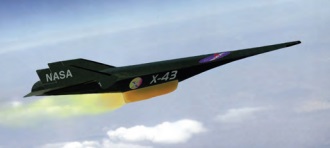Chapter: Hypersonics and Space Technologies, new invention technology, Research project papers,
High-Altitude Atmospheric Reconstruction

High-Altitude Atmospheric Reconstruction
Armstrong researchers
are participating in an ongoing effort to model high-altitude atmospheric
environments in order to improve flight planning designs for high-speed
vehicles. The primary atmospheric conditions of interest in the upper
stratosphere and lower mesosphere include air density, temperatures, winds,
pressure, and expected uncertainties. These conditions must be characterized
and understood in order to ensure the safety of high-speed aircraft and the people
inside them. Reliable upper atmospheric models contribute to better flight
parameter choices for speed and altitude and enable faster, safer, and higher
flights for ultra high-speed vehicles.
Work to date: Armstrong provided an
atmospheric reconstruction of the flight regime or best-estimate
atmosphere (BEA) for NASA's Hyper-X scramjet demonstrator, DARPA's Hypersonic
Technology Vehicle 2, the U.S. Army's Advanced Hypersonic Weapon launched
glider, and the U.S.
Air Force's X-51 hypersonic scramjet. Each of these projects has enabled the
team to refine modeling and data collection capabilities.
Looking ahead: The team is currently working on several
projects:
(1) detecting and mitigating atmospheric turbulence to improve
aviation travel, (2) modeling the effects of radiation on pilots, (3)
investigating how cosmic energies are affecting the atmosphere, and (4)
developing sensors for in situ atmospheric measurements and
transmitting these data to appropriate users.
Benefits
Increased
efficiency: Contributes to understanding of key parameters for
ultra-high altitudes
Improved safety: Helps
designers and planners reduce risks associated with atmospheric reentry
and radiation exposure
Applications
High-speed aircraft test flight research
Weather prediction and climate
change research
Global Positioning System (GPS) performance research
Hypersonics and Space Technologies
Akey objective of hypersonic research at NASA is to develop
methods and tools that adequately model fundamental physics and allow credible
physics-based optimization for future operational hypersonic vehicle systems.
Research focuses on solving some of the most difficult challenges in hypersonic
flight, and Armstrong innovators are contributing to this research in several
ways:
- Exploring adaptive guidance systems
that could detect conditions likely to result in dangerous situations and
automate compensating maneuvers
- Modeling high-altitude environments to
improve flight planning designs for high-speed vehicles
- Designing high-temperature insulative
and advanced composite materials
This research will enable the development of highly reliable and
efficient hypersonic systems.
Related Topics